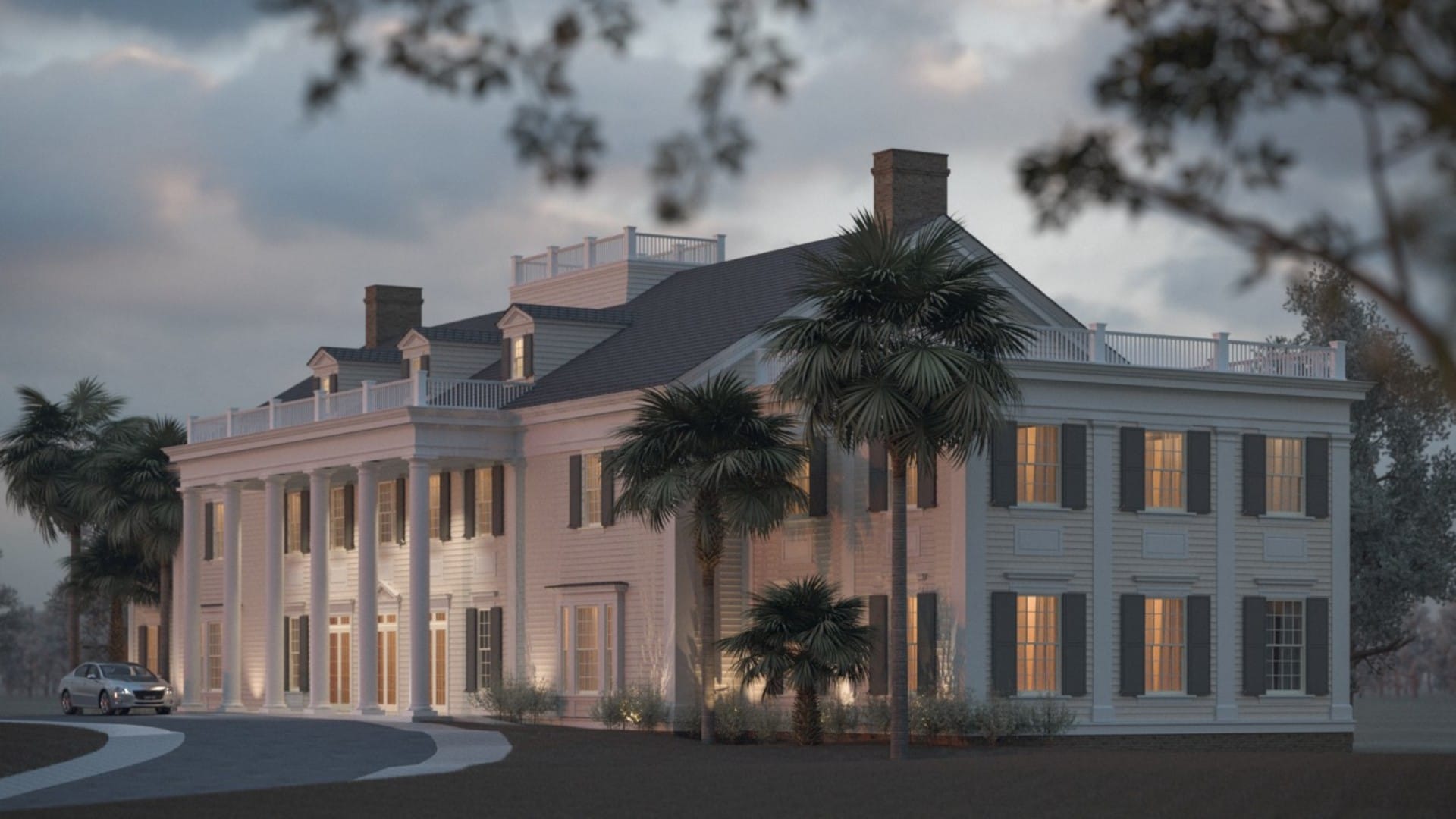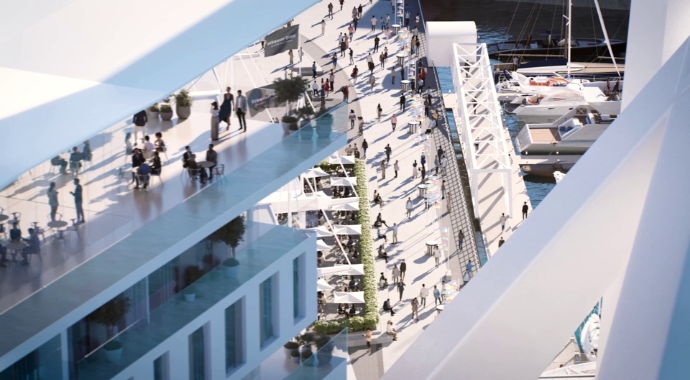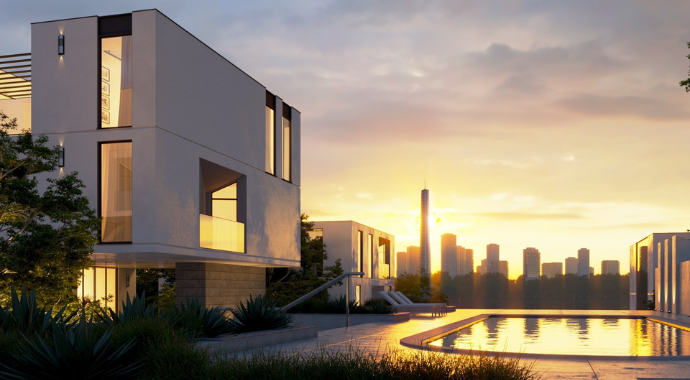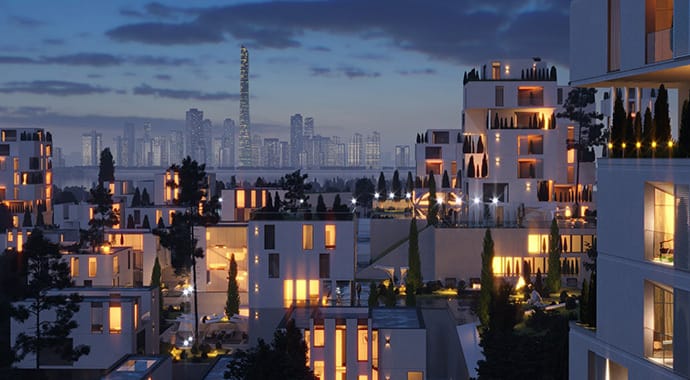V-Ray for Revit's speed and quality have made it essential in RAMSA's architectural rendering software pipeline. BIM expert Miguel Colina tells us more.
Robert A.M. Stern Architects (RAMSA) has become world-renowned for beautiful buildings in a wide range of architectural styles that blend into the surrounding environment while making use of modern techniques and materials. Visualization is a key stage of RAMSA’s architectural process — each project requires numerous iterations to help designers and clients in the decision-making process.
Recently, the company has integrated V-Ray for Revit into its pipeline, giving it the ability to create photorealistic renders, without post-production, from the earliest stages of a project. Most of the renderings are used for in-house design review sessions between the firm partners and designers to portray ideas and help everyone understand the chosen materials, but they are also often shared with clients for input — and some of them end up being publicized, too.
We asked Miguel Colina, an architectural designer and BIM specialist at RAMSA, to tell us how it’s revolutionized the way the company creates architecture.

Could you give us a little background on yourself and RAMSA?
Miguel Colina: RAMSA is a 265-person firm of architects, interior designers, landscape architects and supporting staff. Over its 50-year history, it has established an international reputation as a leading design firm with wide experience in residential, commercial and institutional work. As the firm’s practice has diversified, its geographical scope has widened to include projects in Europe, Asia, South America and throughout the United States.
In our work, we dig deep into history and culture to discover the appropriate expression for each of our projects. We rely on architectural principles of long-standing and fundamental importance because we believe that architecture, as a narrative art, must be legible to the users of a building.
About me: I graduated in 2018 with a degree in Architecture from the Universidad Politécnica de Valencia in Spain. In my second year, I became interested in V-Ray for 3ds Max and, after reading and watching a few courses, I learned how to create photorealistic renderings. I picked it up again in my work at RAMSA, though at the time, I thought it was too time-consuming — especially with the slow 2012 computer I was using! I also took up photography, which ended up being super valuable in my approach to architectural renderings at RAMSA.
I have been at the firm for two years as an architectural designer. I didn’t know Revit when I started, but thanks to the very talented people at the firm — which has a department dedicated to teaching and exploring all architecture software – I learned quickly, and soon became an expert. Combined with what I had learned during school, using V-Ray for Revit felt like a natural next step for me.

What makes RAMSA a great place to work and what are some of the cool projects you’ve worked on?
MC: We're all working from home at the moment, but we can't wait to get back to our unique office. We occupy two floors with a layout designed to connect important spaces: Our vast architectural library; the firm's model shop with a central section that converts to a lecture hall; and a commons large enough to accommodate the entire firm for events and also serves as a gallery for the firm's exhibits of drawings. Everything was designed to support an atmosphere of collaboration and openness. And with a design staff of very diverse backgrounds and specialties, we all learn from each other every day.
I have worked on a multitude of projects, including residential projects in New York, Boston, China and Peru, as well as academic buildings. When it comes to visualization, one of the coolest things about the diverse and international work we do at RAMSA is the wide variety of materials and building styles we get to play with. Instead of sticking to just glass and steel, we use stone, brick, wood and ceramics of all sorts of colors and properties. This makes every render a new and interesting challenge.
[V-Ray] gives us a lot of control and freedom in the creation of visually accurate materials and stunning lighting that we could not otherwise achieve from Revit.
Miguel Colina, Architectural Designer, RAMSA
When did you decide to use a rendering tool in your Revit workflow?
MC: Last year, we decided to start producing photorealistic renderings in Revit as we were preparing for a design meeting with a New York client. The client was very accustomed to photorealistic images from visualization companies, which are costly and time-consuming to make. We had a tight deadline and wanted to get nice-looking images, but because of how quickly we were making the design changes, spending a lot of time in Photoshop to make our renders look real was not viable. The moment you move a few windows or change the height of a level, most of the work done in post-production becomes useless.
Consequently, the team decided to spend a bit of time learning how to set up V-Ray scenes in Revit — and the results were impressive. By taking the extra time to set up scenes, we could update a Revit model and produce a client-ready, realistic V-Ray for Revit render in one click. That was when we realized we could add V-Ray to our BIM toolset and incorporate it into even the earliest stages of a project. In the end, the client loved the images and the presentation was a success.
What are the advantages of using V-Ray in architecture?
MC: For us, the advantages are the robust engine and user control. At RAMSA, it is very important for us to retain consistency between renderings, as we produce many iterations of our designs. With other tools, we have experienced issues with image reliability. A rendering can look completely different from one day to the next, just because the camera or geometry slightly shifted and the software re-calibrated the exposure or color automatically.
V-Ray has eliminated that problem for us completely. The plug-in also gives us a lot of control and freedom in the creation of visually accurate materials and stunning lighting that we could not otherwise achieve from Revit.
We've been very happy with the way the latest version of V-Ray for Revit saves our assets and settings directly into the Revit project. It's made collaboration so much easier.
Miguel Colina, Architectural Designer, RAMSA
Why did you decide on V-Ray for Revit? How easy was it to integrate?
MC: At the office, we were already very familiar with V-Ray in other applications such as V-Ray for SketchUp and V-Ray for Rhino. But when using Revit, the workflow typically involved either exporting the geometry to other programs or using a non-ray-tracing rendering engine and a lot of post-production in Photoshop. Once the V-Ray for Revit plugin started incorporating more and more useful features, we realized we could save time — and get better results — by setting up our Revit model with V-Ray.
It turns out that V-Ray works well with Revit, and it can take advantage of some of its core features such as parametrization, accurate daylight and material management for the building’s BIM elements. We've been very happy with the way the latest version of V-Ray for Revit saves our assets and settings directly into the Revit project. It's made collaboration so much easier.
We have used V-Ray for Revit in a large variety of projects. These include small and large residential projects, such as high-rise apartment towers, as well as academic buildings.

Why Chaos Cloud has been a game-changer
"We love V-Ray’s cloud rendering. In the past, rendering from Revit was discouraged, as the process would take most of the computer’s resources and prevent us from continuing to work on the model. Now, with Chaos Cloud, during tight deadlines we can change a few things in the design, send a render to the web server and continue working on the model.
"Consequently, we can make extremely high-resolution images for large prints without having to worry about the render taking up five hours of our time on the computer. This has been game-changing. The fact that, in our tests, Chaos Cloud can render three-times faster than a workstation doesn’t hurt either!"
Do you have a favorite tool in V-Ray for Revit?
MC: There are so many! Proxies have been a godsend for giving life to our renderings without having to depend on Photoshop. They allow us to use virtually any 3D model we can find, ensure that the entourage we add — such as people, trees and cars — will be at the right scale and that their reflections and shadows will work perfectly with our scene. However, the ability to switch out a Revit material with a high-quality V-Ray PBR material is perhaps our favorite feature. We get to keep our Revit files lightweight, but our renderings still feature realistic, high-resolution textures.
What are you working on next?
MC: Although we can’t talk about specific projects, when it comes to V-Ray for Revit we are testing some very exciting ideas.
Lately, we have been playing with proxies and V-Ray scene files to add interest or interior architecture to our renders. Even though we mostly use the software to render building exteriors, we are exploring how we can take advantage of its powerful engine to render interior scenes. Our interiors are usually modeled in SketchUp, but since the last V-Ray update, that geometry can be imported into Revit with a scene file.
Now, we can get the best of both worlds: A robust BIM exterior and a very detailed interior, both seamlessly rendered together with V-Ray. Plus, we can do all this without driving up the size of the Revit file with heavy, complex families. We are also experimenting with other workflows and tools, such as using Dynamo scripts to make our renderings look more natural by randomizing lighting or window treatments.







